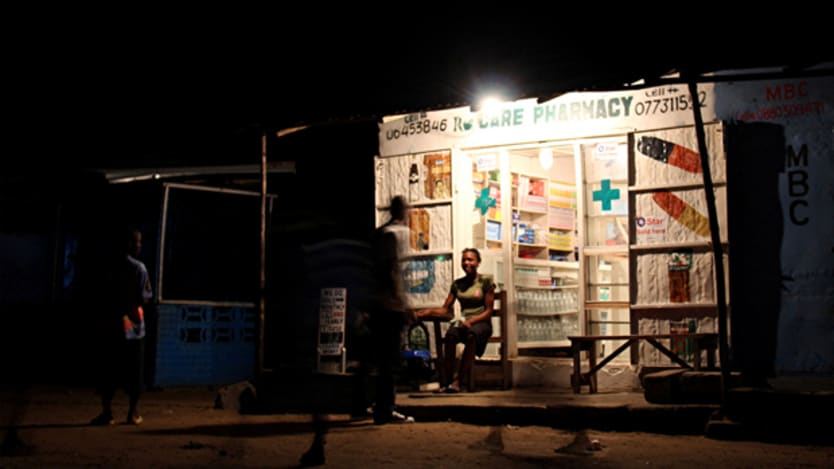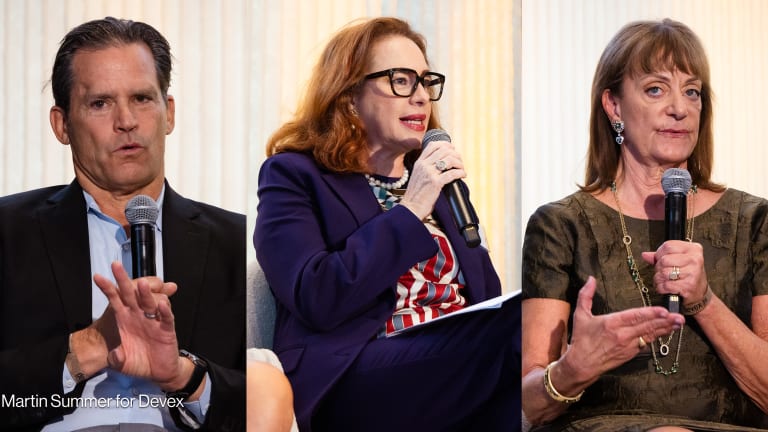
Next month will mark the first anniversary of U.S. President Barack Obama’s announcement of the Power Africa initiative. Leveraging technical expertise and $7 billion in financing from the U.S. government as well as $14 billion from private sector partners, the initiative aims to create 10,000 megawatts of power in sub-Saharan Africa over the next five years.
An overdue effort to address the lack of power access affecting two-thirds of the region, Power Africa has been called “innovative” and “a new operating model.”
This may be true — but only if you don’t count the fact that China has used a similar approach on the continent for years.
While the Chinese model differs in important ways — many firms operating in Africa are at least partially state-owned — government financing and facilitation are hallmarks of the strategy. As the Power Africa program enters its second year, it’s worth taking a closer look at the Chinese model it borrows from, what it gets right and what could be improved, so that Power Africa truly becomes a new, long-term way of doing business.
China as the ‘one-stop shop’
About 15 years ago, China began ramping up its business activities in Africa, seeking raw natural resources to fuel its exploding economy. A key factor in striking these deals was the heavy involvement of the Chinese government, from structuring financing to coordinating directly with African governments.
This often allowed China to present itself to African governments as a kind of “one-stop shop.” To help hydropower companies enter the African market, for instance, the Chinese Export-Import Bank would offer long-term loans with favorable interest rates to African governments, which would in turn hire Chinese companies to come in and build the entire project — with Chinese tools and labor as an important part of the mix.
The results speak for themselves: the Chinese have finished 13 dams supplying 2,790 megawatts in sub-Saharan Africa, with 25 dams supplying 8,250 megawatts under construction, and 26 proposed dam projects expected to add 18,000 megawatts. They are also extremely active with geothermal and other types of energy projects, often on a potentially transformative scale, such as a 1,000 megawatt thermal energy plant in Malawi that would quadruple the entire country’s generating capacity.
Moreover, the Chinese have developed a reputation for moving fast, something not always characteristic of firms from the U.S. and Europe.
Granted, government involvement is natural when it comes to state-owned enterprises — but China often provides similar assistance for private firms, like telecommunications giant ZTE. In 2006, for instance, ZTE won a major contract over Western competitors by offering $1.5 billion in low-interest financing, funded by Chinese state-run banks.
In short, China has shown how coordinated and sustained government action can be a force multiplier — clearly one of the hopes for Power Africa.
How Power Africa can do more
The “one-stop shop,” however, has serious drawbacks. Projects may be completed quickly, but that sometimes comes at the detriment of quality, such as when a Chinese-built hospital in Angola had to be evacuated in 2010 for fear of imminent collapse just four years after construction. Critics have also often cited a lack of transparency in Chinese business deals with African governments, claiming the closed-door nature of many arrangements has fuelled corruption.
One of the most common complaints, however, is that China’s approach doesn’t adequately benefit local communities, either through employment, capacity-building or community outreach/corporate social responsibility projects. At a Chinese mining conference in 2010, the World Bank chided companies for failing to establish positive community relations, noting that they should pursue a more “value-added” approach to business on the continent. These concerns have been underscored in the last few years by a series of anti-Chinese protests that have erupted in countries like Angola, Zambia, Senegal and Malawi.
For Power Africa to achieve even more, it must build on the Chinese model as much as it has borrowed from it — starting with better community relations. American firms have a good head start here. Companies like General Electric and Symbion already run programs training local participants in business or technical skills, for instance.
That said, Power Africa projects will likely cause disruption with new construction — and will understandably create high local expectations for employment, or quick electrification results. Firms hoping to make Power Africa truly catalytic would be wise to develop far-sighted, comprehensive community relations strategies that align with their business objectives and areas of expertise. Ideally, these programs should be easy to scale and replicate, so that companies can apply them almost anywhere on the continent as they expand their business. And firms will get the most out of this effort if it is built into their strategy from the start — before the ink dries on the next contract.
Lighting the way forward
The Power Africa initiative is an important step, one that shows that the United States is willing to do more to help Africa increase its energy capacity. But even the U.S. government has acknowledged that providing power access to all of sub-Saharan Africa by 2030 would require $300 billion — more than 14 times the current financing provided by Power Africa.
Whether Power Africa is ultimately a floodlight or a flickering candle will come down to sustainability — creating energy not just in the power lines, but among the governments, financiers and consumer communities that will be essential for growth.
Much of this depends on moving beyond the Chinese model, creating relationships with governments and communities that fit our values and ways of doing business. With programs to improve local capacity and address community needs — as well as expanded U.S. government support — Power Africa can ensure long-term benefits for businesses, local citizens, and the continent as a whole. And that’s a truly electrifying prospect.
Join Devex, the largest online community for international development, to network with peers, discover talent and forge new partnerships — it’s free. Then sign up for the Devex Impact newsletter to receive cutting-edge news and analysis every month on the intersection of business and development.
See more:
Where does MCC fit into Power Africa’s ‘division of labor’?
Lee Zak on Power Africa: 'The phone is ringing off the hook'
Power Africa: 7 unanswered questions
Managing expectations on Power Africa
Power Africa's leaders (and skeptics) speak out









